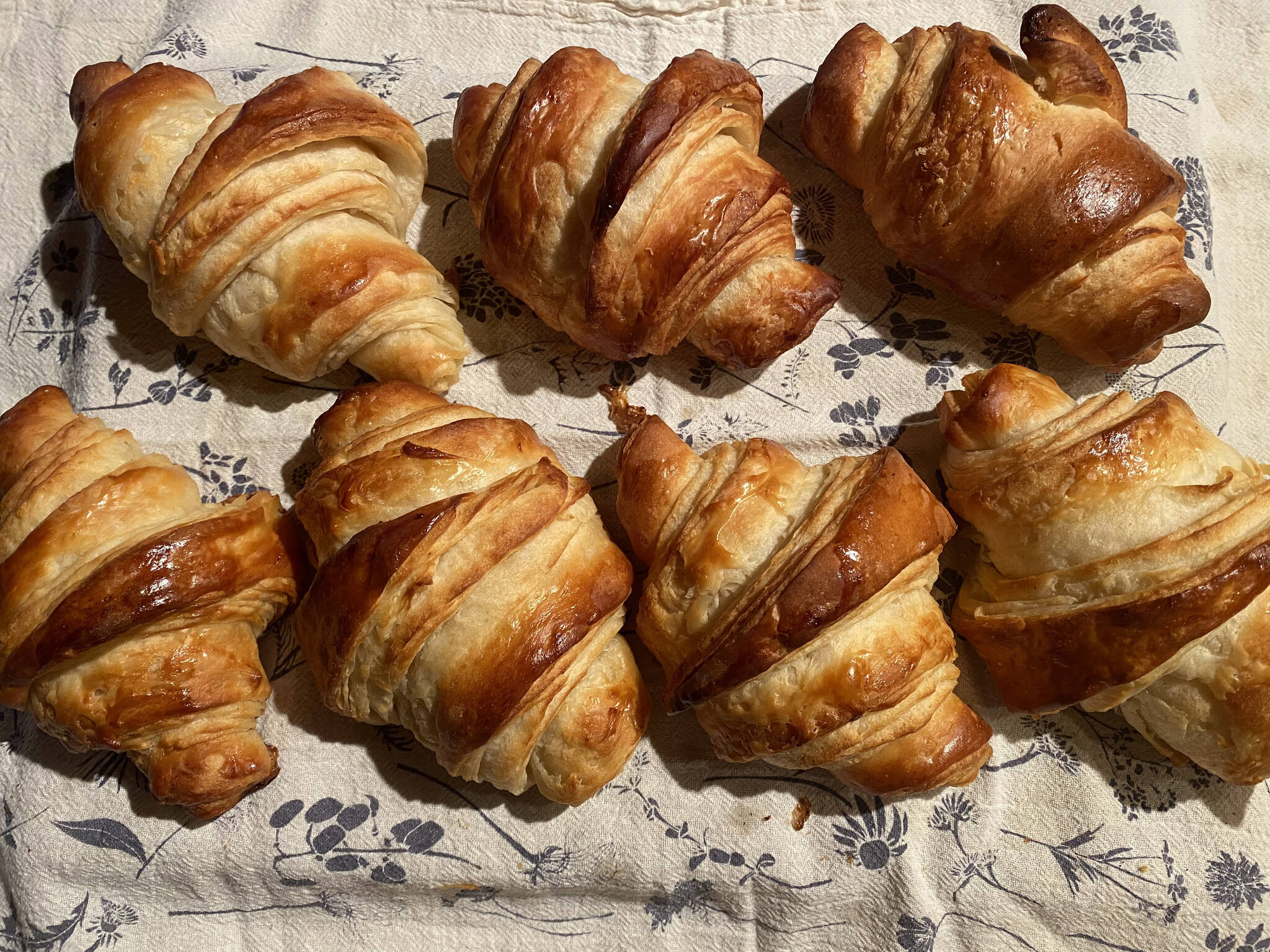In my opinion, the croissant is the pinnacle of patisserie. The crispy, flaky layers of golden goodness require precision and skill, and are not well-suited for the casual baker to whip up on a whim. However, if you follow the steps faithfully, the rewards will far outweigh the time and effort spent creating the most delightfully snooty of French delicacies.
Ingredients:
4 cups all-purpose flour
1 cup whole milk
½-1 cup water
2 tablespoons active dry yeast
1⁄3 cup sugar
3 sticks salted butter — room temperature
1 egg (for egg wash)
Directions:
Sift together your flour, yeast and sugar in a large bowl.
Warm your milk to about 100 degrees and pour over the flour.
Combine as completely as possible. The dough will be very dry and will not come together yet.
Pour in your water, starting with ½ cup and adding more as needed, until the dough just forms a ball. The dough will be very stiff.
Knead for at least 10 minutes until the dough is uniform in texture. It will still be quite dry.
Wrap tightly in plastic wrap and set in the refrigerator for 1 hour.
While dough is chilling, lay out a sheet of parchment paper and flatten your three sticks of butter out on it until you have a 12- by 10-inch rectangle of uniform thickness. Cover in plastic and place flat in the freezer (or outside if winter) to freeze solid.
Lightly flour your surface and roll the dough out into an 18- by 12-inch rectangle. Position the dough so the shorter end is facing you.
Remove your butter sheet from the parchment and lay on top of the dough so 2/3 of the dough is covered in butter with an even margin on both sides.
Fold the uncovered portion of the dough down over the butter, then fold the bottom third (with the butter) up over that. This is called a “letter fold”.
Turn the whole thing 90 degrees, so the short end is facing you again, and roll out until you have another 18- by 12-inch rectangle.
Repeat your letter fold, wrap tightly in plastic, and move to the refrigerator for at least 1 hour.
Repeat this process three more times: Roll the dough out to 18- by 12-inch, letter fold, wrap in plastic, and chill.
After the fourth fold, let the dough chill overnight.
In the morning, take the dough out and roll it out to a 24- by 12-inch rectangle. The dough should be about ¼ of an inch thick.
Cut the dough into long, thin triangles (about 4 inches wide at the wide end). You should get nine plus end scraps. (I pressed the scraps together to fashion a 10th, slightly less perfect croissant).
Place the triangles in front of you with the wide end facing you and roll all the way up. You can leave it straight or curve it slightly to create a crescent shape.
Arrange on parchment lined baking sheets with plenty of room around each, cover, and allow to rise for 1 hour.
Brush the tops with egg wash immediately before putting in the oven.
Bake at 350 degrees for 15-17 minutes. There will be some melted butter on the pan, so take care when removing the trays. Immediately move onto a cooling rack so they won’t absorb the excess butter and get soggy.
Allow to cool for as long as you can resist. Serve warm with strong coffee.
For best results, keep the dough and butter as cold as possible when rolling and doing your letter folds. If the butter melts into the dough too much your croissants will be gummy and dense instead of flaky, well-defined layers. My little hands run hot, so I needed to dip them in snow often while I worked. For sweet croissants, try spreading some Nutella or fruit jam onto the triangles just before rolling and sprinkle some coarse sugar on top.
Bon appetit!

